How I Sold a Blog Post for $6k to 3LAU
A new web3 media platform called Mirror offers a new way for journalists to monetize their work. This past month, I set out to explore the NFT value stack – leveraging Mirror to make the essay into an NFT. The post, titled “NFT Value Capture Equation” was broken down using a fractional token called $VALUE.…
By: Cooper Turley • Loading...
Research & Opinion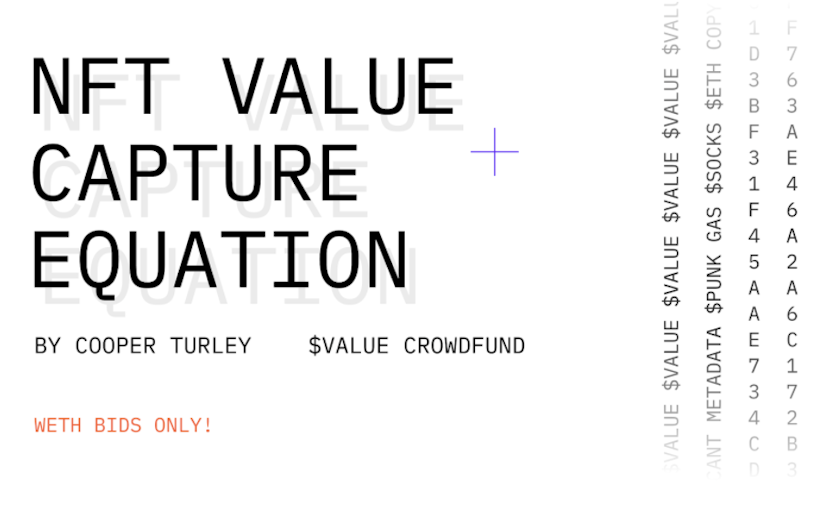
A new web3 media platform called Mirror offers a new way for journalists to monetize their work.
This past month, I set out to explore the NFT value stack – leveraging Mirror to make the essay into an NFT. The post, titled “NFT Value Capture Equation” was broken down using a fractional token called $VALUE. I unbundled the NFT landscape and honed in on the curation layer to spotlight rising Creator DAOs like WHALE and FWB Pro.
Where do NFTs capture value?
One word – curation ✨
My first tokenized essay – $VALUE – is now live on @viamirror ⬇️https://t.co/Q6HCzYijzG
— Coopahtroopa ?ᴗ? (@Cooopahtroopa) March 25, 2021
$VALUE hit its crowdfund target of 2 ETH in under five minutes, and the NFT of the post sold for 3.33 ETH to 3LAU earlier this week. Here’s what I learned from my first NFT.
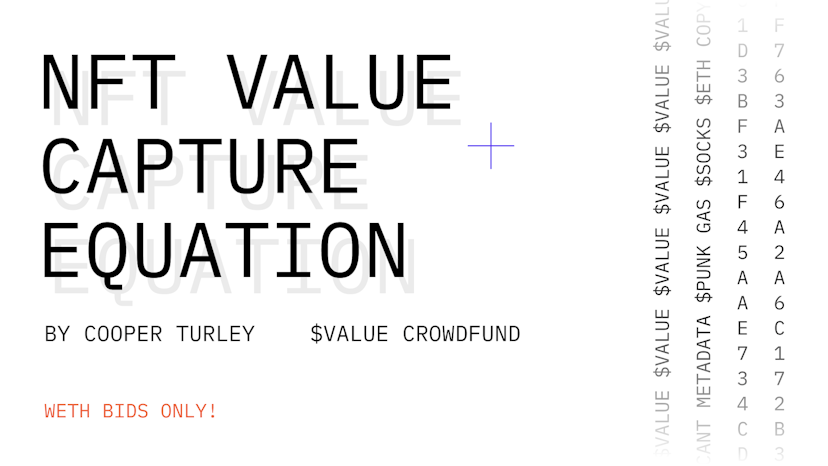
Crowdfunding a Blog Post
$VALUE was the second Mirror crowdfund, the first coming from John Palmer and $ESSAY.
While the potential to tokenize any form of media is fascinating, the concept of democratization and community ownership is where this story gets interesting. Here’s a TLDR of how it works.
- Propose a thesis for an essay with a crowdfund target.
- Open the crowdfund and issue a fractional token (in this case $VALUE)
- Publish the post.
- Sell the NFT.
- Distribute proceeds pro-rata to token holders.
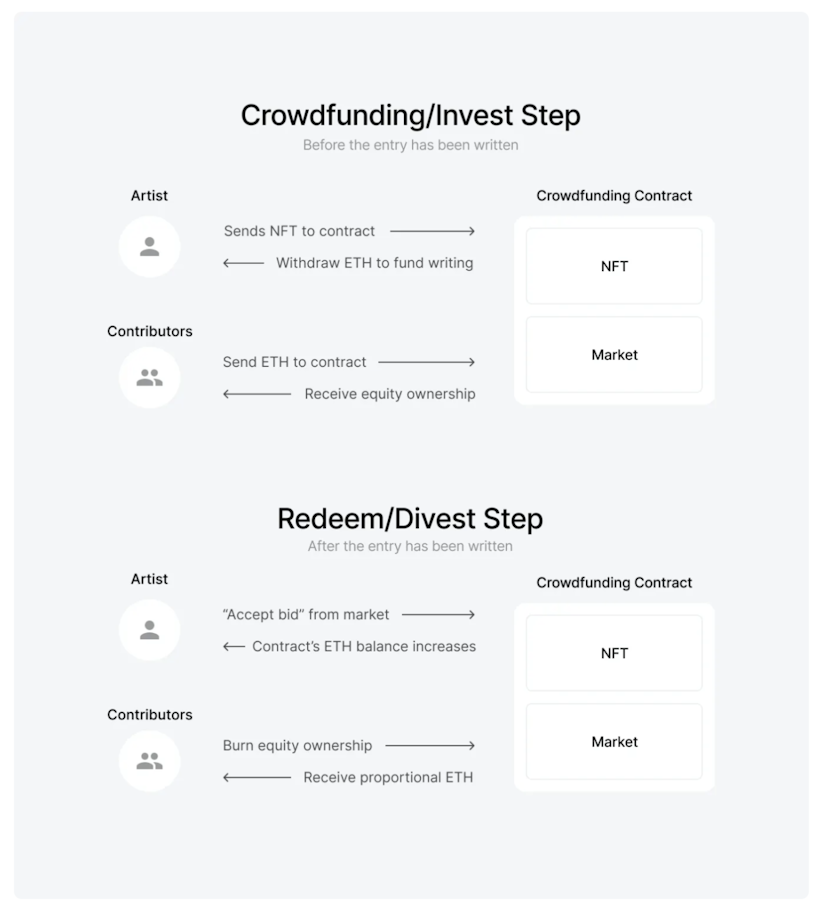
When setting up the crowdfund, the author selects a soft cap (1 ETH), hard cap (2 ETH), payment token (ETH) and ticker symbol (VALUE). They define the creator share captured on future sales (10%) and what percentage of fractional ownership (25% – defined in VALUE tokens) they retain. Under the hood, Mirror deploys a smart contract tied to a Zora zNFT, representing the future home of the post.
This means that I posted twice for this experiment, once to describe and facilitate the crowdfund, and once to create a placeholder post for the on-chain NFT.
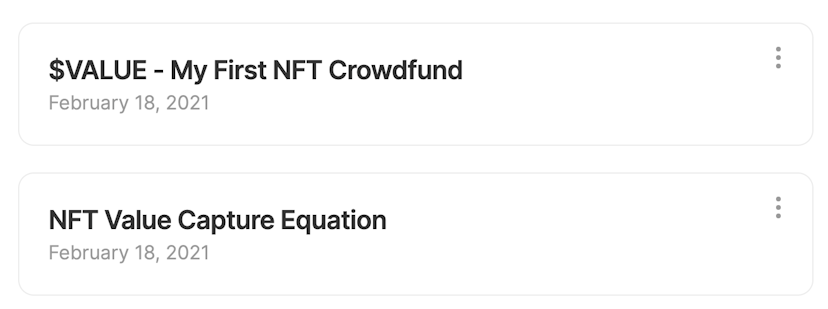
When setting the parameters for the post, there were a couple questions I kept in mind.
- What is a reasonable amount for this crowdfund?
- Will I be able to sell this NFT for more than I am crowdfunding?
- Should participants be capped at a maximum contribution amount?
Crowdfunding allowed me to allocate a significant amount of time and energy into the post, but it was important that the backers had the potential to benefit as much as the author(s).
Despite launching the post with no prior marketing, the crowdfund target was hit in under 5 minutes on the Mirror livestream – a strong testament to the demand for micro-economies and new creative mediums.
That was quick! Viewers of the livestream backed the entire crowdfund in under 5min.
Congrats @Cooopahtroopa, can't wait to read the post.https://t.co/PCRvYoLmaP
— d.mirror.xyz ? (@Iiterature) February 18, 2021
Thus, $VALUE was born. Despite having no secondary market liquidity and no utility, the tokens always served one purpose – pro-rata ownership of the $VALUE zNFT.
Publishing the Post
When it came time to publish, the contents replaced what was a placeholder block of text – describing the offering and that the page would be updated when the article was ready.
When the article went live, bids started flowing into the NFT directly on Zora. It helped that the post gained a lot of traction, currently sitting at ~274k impressions on Twitter alone.
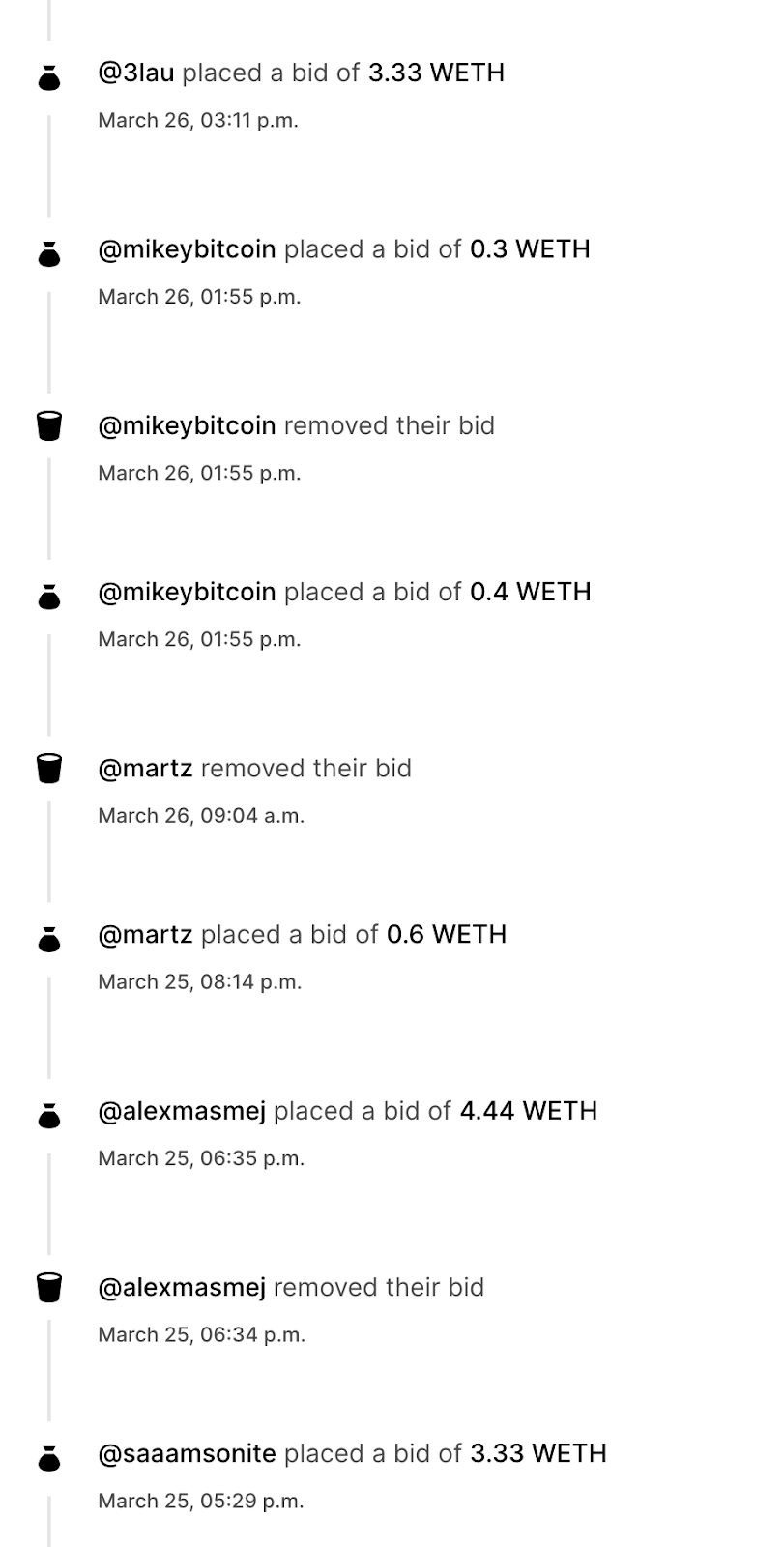
The most important nuance was which bid I chose to accept. Despite Alex Masmej having the highest bid at 4.44ETH, 3LAU’s second highest bid featured a 50% sell-on share.
This means the next sale would return an additional 50% back to the $VALUE contract, on top of the predefined 10% creator share. $VALUE holders would thus earn more from each secondary market sale.
Despite a higher bid from Alex, 3LAU’s signal meant there was a higher chance of the essay reselling in the future.
At the end of the day, I opted to accept a lower bid today for a higher secondary sale potential and more signal.
Once the bid was accepted, the ETH flowed directly to the $VALUE smart contract, and could be redeemed at any time by token holders. Alternatively, those holders could hang on to their tokens and wait for future sales to occur. When tokens are redeemed, they are burned forever.
Key Takeaways
Crowdfunding was an awesome experiment. We’re now seeing many other writers explore this premise from $BOUNTY to $GENERALIST and $MOOD.
The crowdfund drastically influenced the intention and output of the post, and I’m happy to have given my backers the ability to redeem their ownership for more ETH than what was originally contributed.
However, there are some tradeoffs. Selling the blog post created a strange pressure upon publishing. Luckily I had friends and colleagues willing to support, but this feels like a rarity as these experiments pan out. It’s harder to grasp why a blog post has value relative to a 3D animated graphic, but it’s good to push the needle.
Mirror is starting to ramp up itself, hosting $WRITE races every Wednesday to get new users on board. This goes to say that exclusivity creates a premium, and I was lucky to be an early adopter of this new medium.
$VALUE wouldn’t have been possible without the support of the Mirror team, and I very much look forward to this primitive expanding far beyond blog posts.
At a time when celebrities and billionaires are riding the NFT boom, it’s about time we found a new way for their earliest, most loyal advocates to benefit.
Until then, I’ll keep writing.
Advertisement
Get the best of The Defiant directly in your inbox 💌
Know what matters in Web3 with The Defiant Daily newsletter, every weekday
90k+ investors informed every day. Unsubscribe anytime.